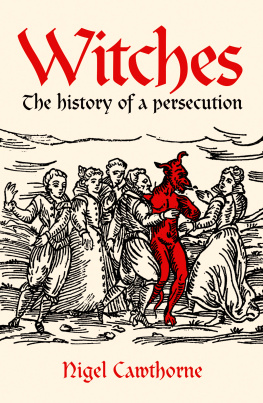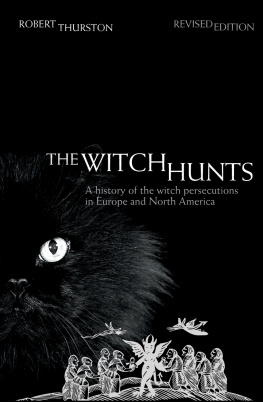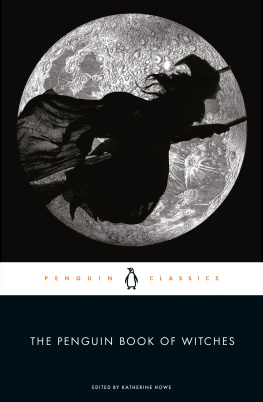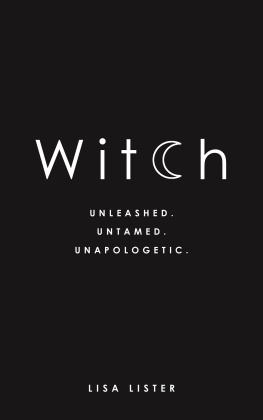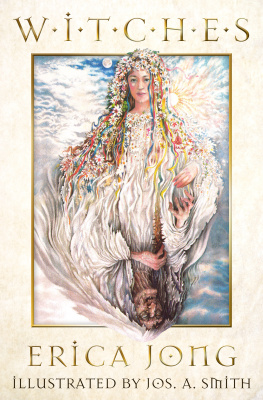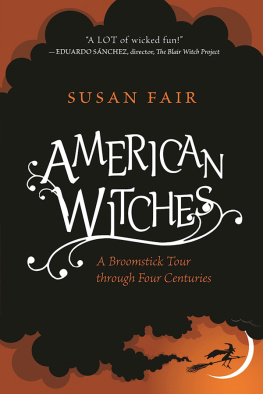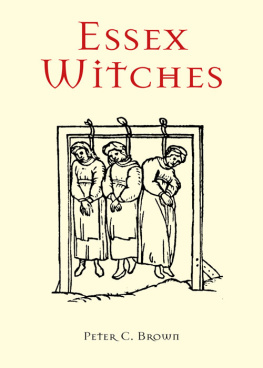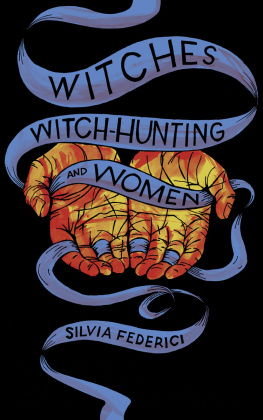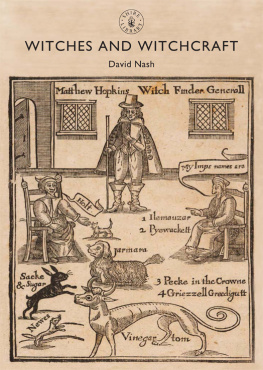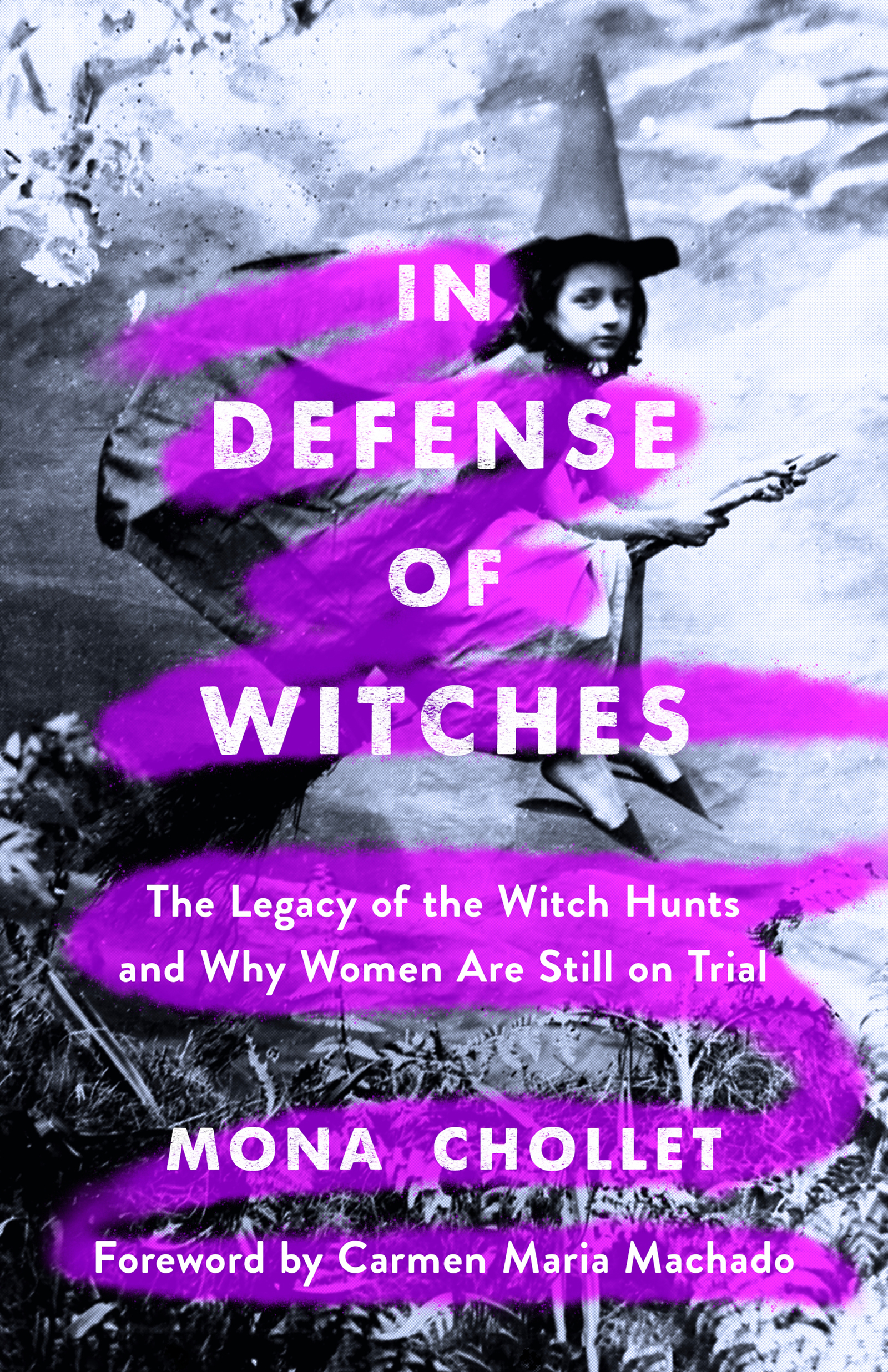Contents
Guide
Pagebreaks of the print version

The author and publisher have provided this e-book to you for your personal use only. You may not make this e-book publicly available in any way. Copyright infringement is against the law. If you believe the copy of this e-book you are reading infringes on the authors copyright, please notify the publisher at: us.macmillanusa.com/piracy.
There is no joining WITCH.
If you are a woman
and dare to look
within yourself,
you are a Witch.
WITCH Manifesto
(Womens International Terrorist Conspiracy from Hell),
New York, 1968
For me, it was Strega Nona: the wily, no-nonsense witch from the eponymous picture book, who owns a magic pasta pot, commands the respect of her community (even the local priests and nuns!) and holds her dopey helper, Big Anthony, to account for his disobedience and mischief. For my spouse, it was Angela Lansburys character, Eglantine Price, in Bedknobs and Broomsticks, who wears knitted cardigans and fights Nazis via witchcraft she has learned through a correspondence course. For Mona Chollet, it was Flutter Mildweathera character in a Swedish childrens book, The Glassblowers Childrenwho makes carpets, consorts with a one-eyed crow and wears an indigo cloak and a tall violet hat festooned with flowers and butterflies. Imagine, for a moment, your witch. Not your earliest witch, necessarily, but the one who first captured your attention. Are you holding her in your mind?
I imagine I can tell you some things about her. She is a woman, single and childless. She has her own little house, which she may or may not share with an animal. She is an artist, or a craftswoman, or a scientist, if you imagine magic as a kind of science. She has an undeniable air of poise and a wonderful sense of style. Whether or not she is evil (after all, we have The Wizard of Oz, Grimms fairy tales, and decades of Disney movies to contend with), it cannot be denied that she is wily, self-satisfied, and in charge of her own affairs. She commands respect. She is, to interesting people, someone worth learning from, if not emulating entirely. She is what happens when women get to direct the warp and weft of their own lives.
In Defense of Witches is a spirited account of the way the perpetrators of witch-hunts have endured, albeit in modern form and with altered tactics; so much so that the people responsible can plausibly say they have no connection to their forebears. Here, Chollet ties a litany of modern gendered indignitiesfrom the minor, aggravating, day-to-day negotiations to large-scale injustices and human-rights abusesback to historic witch-hunts, which historian Anne Llewellyn Barstow calls a burst of misogyny without parallel in Western history.
The phrase witch-hunt is a curiously loaded one; deployed nowadays, the speaker is almost certainly using it incorrectly and acting in bad faith (and would unquestionably minimize witch-hunts as historic fact). One cannot help but think of Woody Allens defense of Harvey Weinstein, in which he blamed a witch-hunt atmosphere for Weinstein being held accountable for decades of wide-scale sexual abuses and predations.
But, here, Chollet is far more interested in returning to the roots of the metaphorhow our cultural and societal response to women cannot be unthreaded from our historic treatment of women perceived to be witches. We do not burn, hang, or drown as many women now as we did in the past, but there is no shortage of ways womens lives continue to be destroyed. Women are abused, assaulted, economically disempowered, raped, shoved into the margins, pressured, silenced, ignored, treated as guinea pigs, co-opted, stolen from, misrepresented, forced into pregnancy or servitude, imprisoned, and, yes, sometimes murdered. Every possible decision modern women make or role they occupy, outside of the most rigorous and regressive, can be tied back to the very symptoms of witchcraft: refusal of motherhood, rejection of marriage, ignoring traditional beauty standards, bodily and sexual autonomy, homosexuality, aging, anger, even a general sense of self-determination.
Youd be hard-pressed to find a more enduring and potent archetype than the witch; she has served as a shorthand for womens power and potentialand, for some, the threat of those thingsfor much of human history. And yet, nowadays, witches have become a neo-liberal girlboss-style icon. That is to say, capitalism has gotten ahold of her; and, like so many things capitalism touches, she is in danger of dissociating from her radical roots. What could have once gotten a woman killed is now available for purchase at Urban Outfitters. (Within limits, of course. You can sell her crystals but refuse to pay her fair wages.)
I have long been fascinatedand horrified!by the contemporary commodification of feminism, the way capitalisms interest has clouded its necessity. Many people seem to fall for this line of thinking, however unconsciously: If feminism is something that can be commodified, then it follows that its ultimately frivolous, maybe even unnecessary. But, instead of thinking of feminism as archaic, capitalisms cheapening co-option proves that its more necessary than ever: Womens liberation remains at odds with the patriarchal structures that govern our society.
If we forgeteven now, in an age of the consequences of hard-won political battlesthat women occupy the literal margins, we will continue to lose all ground. It is not an accident that I write this foreword at a moment in US history where abortion rights are in jeopardy, and the COVID pandemicaided by decades of misogynist policies and a nonexistent social safety nethas gutted all of the economic advances American women have made in the last half-century. The fact is, no matter how many advances societies make, they cannot help but treat women in the same predictable ways. The past, as they say, is hardly past at all.
Are you still thinking about her? Your witch? Heres the thing: shes fictional. But you are surrounded by witches; you might even be one yourself. Grab your broomstick, your cloak, your familiar. In these pages, you will find the witch-hunters playbook; may their unbroken chain of successes become your own.
Carmen Maria Machado
June 7, 2021
Philadelphia, PA
Their Descendants
Of course, there was the one in Walt Disneys Snow White, all stringy gray hair under her black hood, a wart on her crooked nose, her inane rictus revealing a single tooth left in her lower gum, and the heavy brows over her crazy eyes further exaggerating her wicked expression. But she is not the witch who made the biggest impression on my childhood: that honor goes to Flutter Mildweather.
Flutter appears in The Glassblowers Children, a childrens novel by the Swedish writer Maria Gripe, which is set in an imaginary Nordic country. She lives in a house perched on a hilltop and nestled beneath a very old apple tree, the shape of which is visible from far away, outlined against the sky. The region is peaceful and lovely, but the inhabitants of the nearby village avoid wandering that way, for a gallows once stood there. At night, you may catch a faint glimmer at the window while the old woman weaves and chats to her crow, Wise Wit, who has been one-eyed ever since he lost the other by looking too deeply into the Well of Wisdom. More than the witchs magical powers, I was impressed by the aura she had, a blend of deep serenity, mystery and insight.


